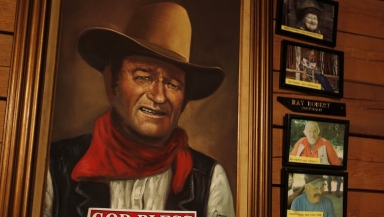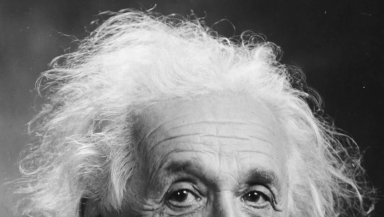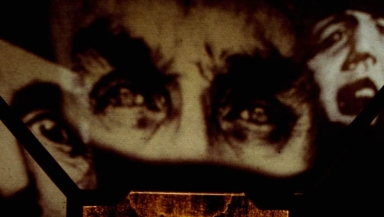
Every now and then they pop up on your social media timelines: those stories about God and his followers which just don't quite add up. You know the form: "Original site of Jesus' first bathtub discovered!", or "Christian woman sees face of Elijah in pizza!" Stories like this might initially excite us, but they're almost always part of that proud Internet tradition, the hoax.
Presumably they're mostly made up by well-meaning believers who've come up with a misguided idea to encourage others. Some of the time, they're probably also launched by people with more sinister motivations, who'd seek to undermine Christianity by making it look foolish. I've identified five main types of Christian hoax, into which the majority of these stories fit. See if you can spot the one you're most prone to being tricked by...
1. The Bible-proving discovery
These appear with increasing regularity: stories which claim that 'archaeologists' have uncovered a biblical artefact or a historical site which 'proves' a Bible story really happened. Famous examples include a story about Pharoah's Chariot and the bones of horses being discovered in the Red Sea, which first appeared on a comedy news site, but was then spread as fact by Christians who hadn't checked their source. The best case however, was the apparent discovery of Noah's Ark in Eastern Turkey. The evidence here was a 'boat-shaped formation' in the rocks at the top of a hill. Various scientific-sounding claims were made to support the idea, until scientists discovered that the terrain formation had been made by an earthquake in 1948. If they'd really wanted people to believe it of course, the hoaxers should have added hundreds of perfectly-lined-up animal skeletons to the scene, in pairs.
2. The death-bed celebrity conversion

We all love a celebrity-finds-faith story, but these sometimes turn out to be falsified, especially when they involve a conversion which took place privately (and un-verifiably) at the very end of someone's life. They've been spread about various figures involved in science and/or atheism, including the wildlife documentary maker Steve Irwin, and the writer Christopher Hitchens. The most famous example: iconic Western actor John Wayne, whose professed catholicism wasn't enough for the Internet's story fabricators. They took the true story of Wayne writing to the injured daughter of televangelist Robert Schuller, and then added a lot of artistic interpretation, including the addition of a meeting between the two three weeks before the actor's death, during which he converted to evangelical Christianity. It was a meeting that couldn't possibly have happened due to Wayne's physical state at that time; stories that Wayne donated $1 million to build Schuller's church are also untrue.
3. The controversy that must be stopped
What's worse than a campaign to stop a film portraying a gay Jesus? A campaign to stop a non-existent film portraying a gay Jesus. That's exactly what spread – like wildfire – around the Internet in 2000 when an unknown person of mischief created the fictitious tale of a film apparently in production which would portray Jesus as a homosexual. Readers were urged to sign a petition to stop this 'sick filth' from ever coming into being, and were warned that "already a French prostitute has been named to play the part of Mary Magdalene, with whom Christ has a blatant affair." The story was based on a chain-letter version of the same idea which originates from 1984, while the aftershocks are still felt today when the story occasionally re-emerges. All editions of this story are, of course, hoaxes which have the unfortunate side effect of making Christians look like total bozos for the way they respond to it.
4. The atheist humiliation

It's not a great testament to Christian grace, but the idea that one of those nasty atheist types was profoundly corrected or out-argued by a believer appeals to both our sense of divine justice and more humanly, our insecurities. Most famous of all is the story of how Albert Einstein brilliantly defeated his atheist university professor in front of a roomful of his awe-struck fellow students. The tale goes that Einstein used the 'evil is the absence of God' argument to fight off the accusation that evil was divinely created, causing the professor to finally sit slumped in his chair like a boxer floored by a wonder punch. In fact the story was written long after Einstein's death, with his name added (as it has been to various similar stories) to add an air of unassailable authority to an apologetic response. In fact, Einstein was a reported agnostic, who referred to himself as a 'religious non-believer.' The 'atheist professor' is an Internet character more prolific than Kevin Bacon. Oh, and full disclosure: I've fallen for this one.
5. The face of God

Although for years many believed it was genuinely the burial cloth used on Jesus, the Turin Shroud is now widely accepted to date from medieval times. Not only that; in turns out to be one of an estimated 40 similar cloths alleged to bear the facial imprint of the Son of God. While Internet speculation continues to circulate occasionally about 'exciting new evidence' that the shroud is genuine after all, the 21st century version appears to be images of Christ in food or other household objects. Jesus has been discovered in a Naan bread, a pizza, an orange, a grilled cheese sandwich, and even a Polish Pierogi dumpling, which the owner sold on eBay for $1775. And that one's not even a hoax.
All of which tells us that a side-effect of faith is an occasional disposition to gullibility. That certainly doesn't prove we're all entirely misguided, but it is a note of caution. The proliferation of Christian Internet hoaxes mean that we should always think for at least a moment before sharing that amazing story. Because if it looks unbelievable, there might just be a good reason for that...
Martin Saunders is a Contributing Editor for Christian Today and the Deputy CEO of Youthscape. You can follow him on Twitter: @martinsaunders













